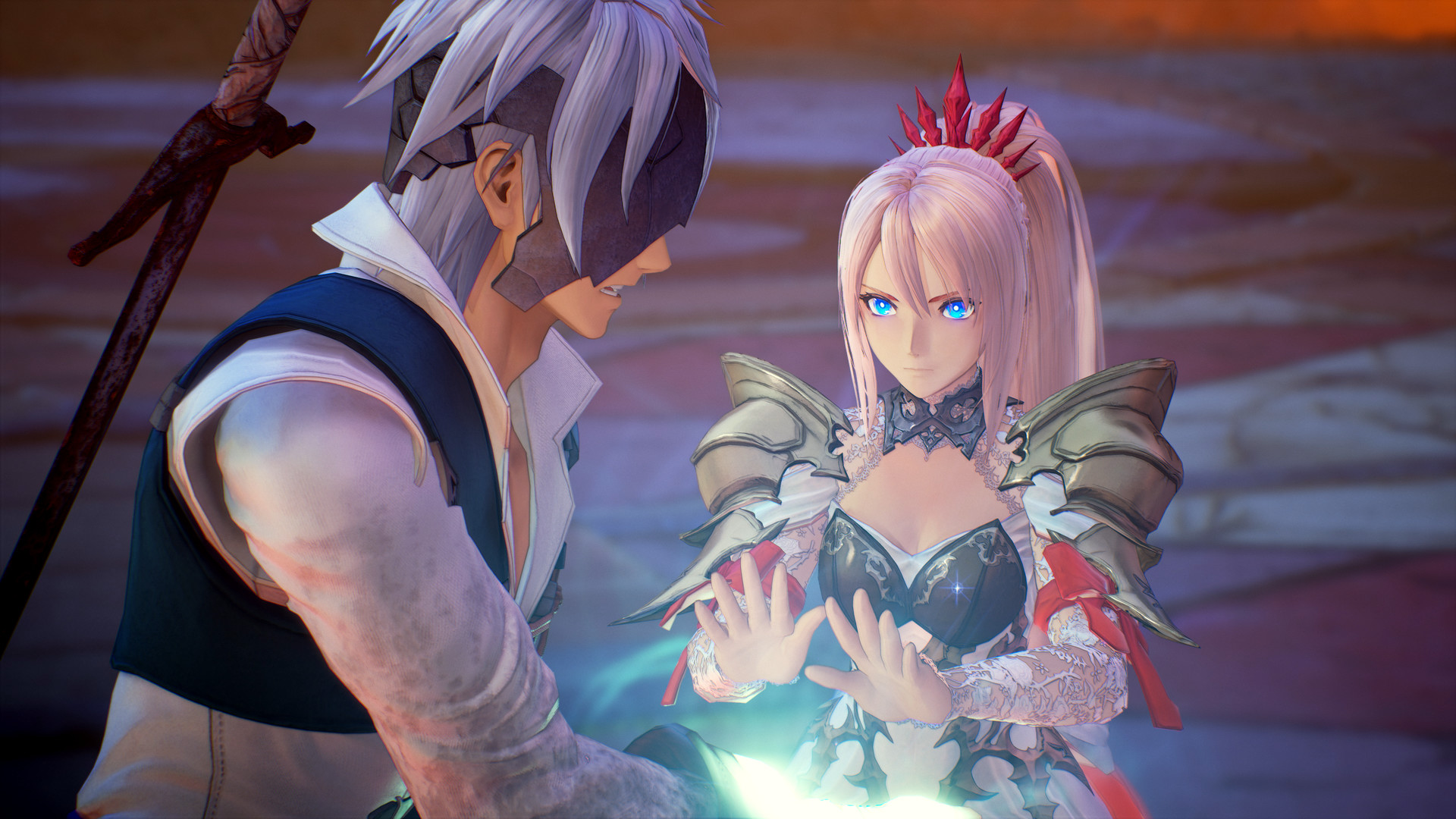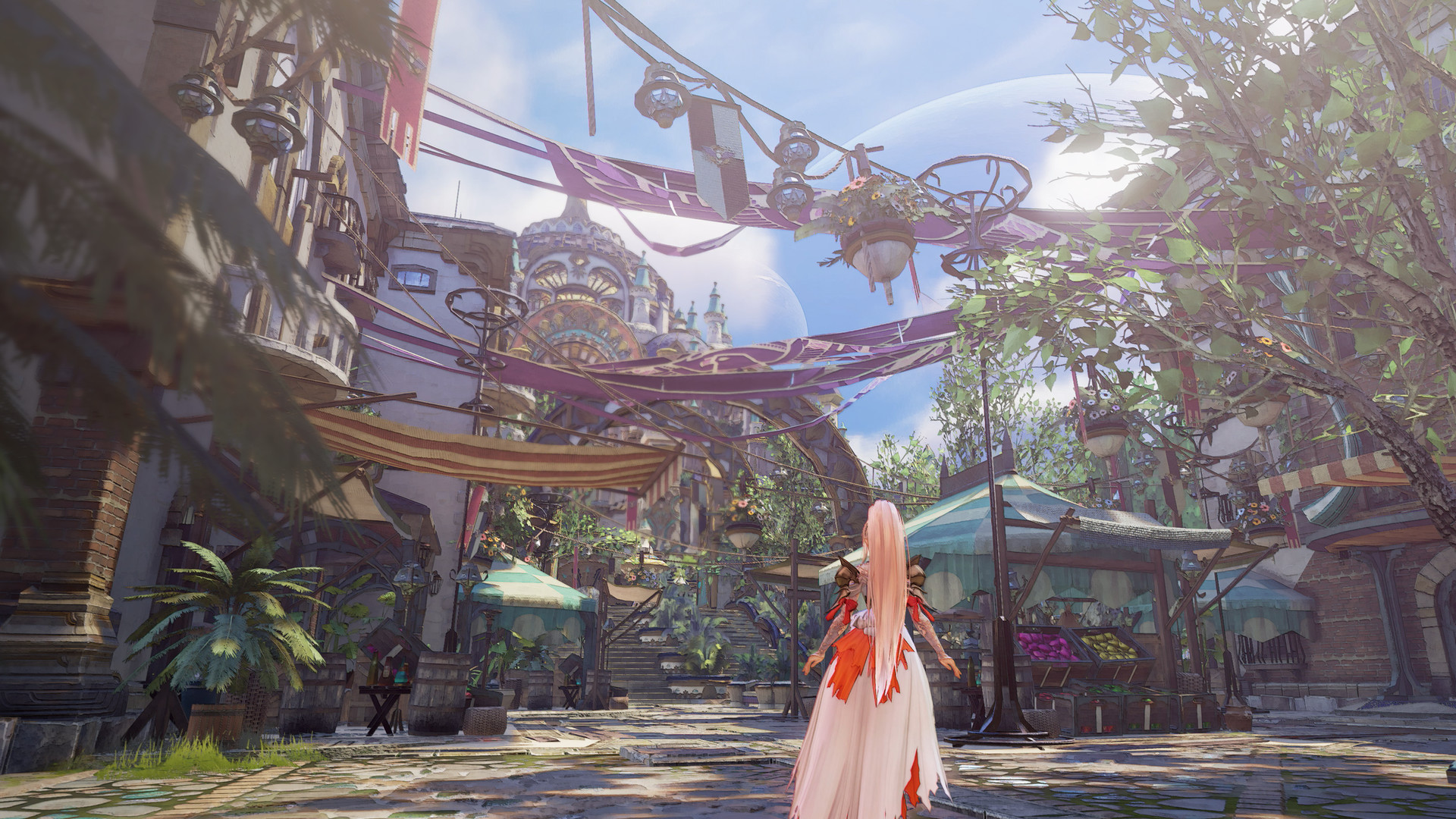For someone that had no idea about ‘Tales of Arise’ at the start of the year to someone that was giddy with anticipation once I played the demo, I am now a full-blown fanboy after playing the full release. Developed and published by Bandai Namco Studios, this single-player JRPG will celebrate the 25th-anniversary event of the critically acclaimed “Tales of” series with director, Hirokazu Kagawa at the helm.
For long-standing fans, this entry will expand upon the foundations known to this series in new and exciting ways with open and welcoming arms for those new to the franchise. In the interest of caution, this review will be spoiler-free for the most part, however, I will be discussing certain themes and roles that are integral to the review, with that in mind, let’s begin.
Before I had even gotten to the main menu, an absolutely breath-taking music video of Hibana by J-rock band, Kankaku Pierrot, gave me a taste of what’s in line for me during my time with Tales of Arise. The clip showcased all 6 playable characters in a stunning anime-inspired montage, highlighting the different lifestyles of the people of Dahna. I almost forget I was about to play a game; I was expecting it to continue into a full-fledged movie. I am beyond happy that this wasn’t a once-off experience as these master class short films return periodically through the game during key story moments and each one is better than the last.
Typically, with this franchise, each entry is a stand-alone experience, save for a few select sequels and spin-offs. So, once I had selected my voice actor options, either Japanese or English, and one of four difficulties, both of which can be changed at any time, I was greeted with a storyboard-style story opening. Dahna, a once prosperous and lively land that looked to the heavens to their neighbouring planet Rena, as a place of comfort, with a belief that their souls went there as their final resting place. Having since been invaded by the technically advanced race that habited Rena and having been enslaved for over 300 years, the lands of Dahna are now broken and dived by imposing and impenetrable walls. Five lords now rule over the people of Danah, as they slave away, draining the planet’s resources to fuel the elemental master cores as they fight among each other to determine the new Sovereign ruler.

For such a grand scope of things at stake, there is a much more personal and intricate stories among the two titular protagonists. Ironmask, your first playable character, who has no memory of his past and is bound to wear an iron mask against his will. He gets roped into a dramatic push from the Crimson Crows Resistance movement to overthrow Lord Balseph in the fiery pits of Calaglia. This is all set in motion when you step in to help free a prisoner from Rena, Shionne, a woman cursed with elemental magic known as Artes, that will lash out waves of electrical thorns to anyone who touches her. For reasons unknown to Ironmask, he has the natural ability to not feel pain and is now the only person who can physically interact with Shionne which unofficially bounds their fate to one another.
There have been certain games that I have played where the storytelling felt like a separate experience from gameplay. As for Tales of Arise, the gameplay and story are brilliantly intertwined as combat and lifestyle elements evolve with introductions of new characters and new areas are conquered. Areas are broken up into regions with groups of enemies periodically placed that will initiate a combat sequence if you get too close. A small fight arena locks you off from the larger region and the only way out is to fight or attempt to flee.
Standard attacks will keep the combos going with the face buttons unleashing devastating Arte abilities that can serve as a plethora of damage and de-buff mechanics. Each Arte ability will cost AG points which will be replenished over time or through perfect dodges and parry actions. As you unlock more characters you gain boost attacks that are unique to each character, such as Law’s boost attack which will break through shield enemies leaving them open to build a combo on them and trigger a boost strike which combines two characters’ powers in a cinematic finisher.
It was a journey, watching the combat evolve to the point of taking on giant Zeugal mantis beasts with six insanely powered characters. Explosion of colours light up each arena as you leave sections of the battlefield scorched from a fire blast or as Rinwall brings down lighting like the God of Thunder. The bold outlines of the character models keep them at the forefront during the chaos to make it easier to track your movements. Enemies are also, brimming with detail down to their individual scales or fastenings for their armour.

Outside of combat, each region of Danah is influenced by the astral energy found in that area. Calaglia is a hell on earth with contrasting shades of molten magma and burnt earth and was fitting for the doom-riddled story beats at the start of the game. By the mid-point of the game, both I and the characters of the game were gaining hope that we may just overthrow the Rena oppressors as the environment of Elde Menancia matched our mood with rolling hills of lush foliage and vibrant skylines. It’s a shame that the farming and fishing mini-games were introduced so late in the game. The expanding on the cooking portion of the game which was used to boost stats after each resting point was a nice addition to the world-building.
I was always followed but an orchestral set-piece wherever I went, with intense violin-led battle harmonies during combat and tense emotional moments hitting with each beat of the tailored music. They even knew when to let the environmental sounds fill the background so the dialogue could take centre stage and not have to compete with battle symphonies, especially during cut scenes and the optional dialogue skits which shed crucial plot elements or in the case of the skits, bonding and exposition moments. I was compelled to search for every possible skit, a comic book style interaction with outstanding voice acting, as it gave every character a moment to shine and learn smaller details about them. In particular, Shionne’s seemly bottomless stomach or Rinwall’s struggles growing up hiding a dangerous secret are a few that really stand out in the character development.
While Bandai Namco has done an exceptional job at bridging the gap between the casual and experienced player, I would say this game leans towards the dedicated. Layering combat mechanics to utilise 6 different characters in one battle is an art and only gets more complex the further you progress. Being a semi-completionist, exploring each area to uncover all manners of treasure sees you are actually rewarded at the end of the game, so I would highly recommend it. In fact, I would just recommend this game in general; I had a very hard time putting it down and currently has my vote for game of the year.

The Good
- Evolving combat system continually out does itself
- Pre rendered cutscenes, skits and anime inspired cut scenes are excellent
- Difficulty levels are varied and keep the game fresh and challenging
- Voice acting and writing were filled with life
The Bad
- Fishing and farming additions could have been added in earlier
- Occasional fast travel gets locked out causes long backtracks








